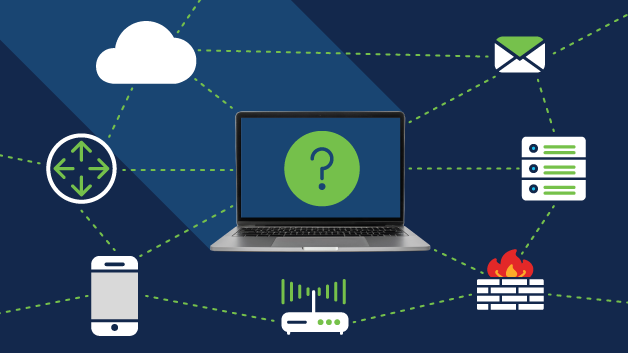Protect Your Assets with FFT Perimeter Intrusion Solutions for Maximum Security
Protect Your Assets with FFT Perimeter Intrusion Solutions for Maximum Security
Blog Article
The Critical Role of Data and Network Safety in Shielding Your Information
In a period where information violations and cyber threats are progressively common, the relevance of durable information and network security can not be overemphasized. Organizations needs to not just protect sensitive info however additionally make certain conformity with evolving governing criteria. The implementation of effective security steps, such as file encryption and gain access to controls, is important to keeping trust fund and operational honesty. Nonetheless, the landscape of cyber threats is frequently changing, questioning regarding the adequacy of present practices and what new techniques may be necessary to remain in advance of possible dangers. What lies ahead in this complex security setting?
Recognizing Data Protection
In today's digital landscape, a frustrating majority of organizations come to grips with the complexities of information security. This essential element of details innovation entails safeguarding delicate data from unapproved access, corruption, or burglary throughout its lifecycle. Information safety and security incorporates different approaches and technologies, consisting of file encryption, access controls, and data masking, all intended at safeguarding info versus breaches and vulnerabilities.
An essential facet of data protection is the identification and classification of information based upon its sensitivity and significance. This category aids organizations prioritize their safety and security initiatives, allocating resources to secure one of the most critical information successfully. In addition, implementing robust policies and procedures is necessary to ensure that employees comprehend their function in keeping information protection.
Routine audits and evaluations aid in identifying prospective weaknesses within an organization's data safety and security framework. Additionally, employee training is important, as human error remains a significant factor in data violations. By cultivating a society of safety understanding, organizations can mitigate risks linked with expert dangers and carelessness.
Importance of Network Safety
Network safety stands as a foundation of an organization's overall cybersecurity approach, with around 90% of organizations experiencing some type of cyber risk recently. The relevance of network protection hinges on its ability to shield delicate information and preserve the honesty of company operations. By guarding network facilities, organizations can protect against unauthorized access, information breaches, and various other harmful tasks that might jeopardize their properties and track record.
Implementing durable network safety and security measures not just assists in mitigating risks however also promotes trust amongst clients and stakeholders. When customers are guaranteed that their personal and economic information is safe, they are most likely to involve with the organization, bring about enhanced client loyalty and service development.
Furthermore, a well-structured network protection framework assists in conformity with various regulative needs. Organizations should follow market criteria and legal mandates worrying information protection, and efficient network safety techniques can guarantee conformity, therefore avoiding prospective fines.

Usual Cyber Risks
Organizations should continue to be attentive against a selection of cyber dangers that can undermine their network protection efforts. Amongst the most usual risks is malware, which incorporates viruses, worms, and ransomware that can interfere with operations, swipe data, or hold info hostage. Phishing assaults, where malicious actors pose trusted entities to trick individuals right into revealing delicate information, proceed to grow in class, making customer education critical.
One more widespread risk is dispersed denial-of-service (DDoS) attacks, which overload systems with website traffic, rendering them not available to reputable users. Expert hazards, whether deliberate or unintended, posture significant dangers as staff members may inadvertently subject delicate information or intentionally exploit their gain access to for destructive purposes.
In addition, click here to read vulnerabilities in software application and hardware can be manipulated by cybercriminals, highlighting the relevance of regular updates and patch administration. Social design techniques better complicate the landscape, as assaulters adjust people right into divulging secret information through mental control.
As these dangers progress, companies need to keep an aggressive strategy to recognize, mitigate, and react effectively to the ever-changing cyber threat landscape, safeguarding their valuable information and maintaining trust with stakeholders. fft pipeline protection.
Ideal Practices for Defense
Carrying out robust protection measures is crucial for safeguarding sensitive info and keeping functional honesty. Organizations must begin by conducting extensive risk analyses to determine susceptabilities within their systems. This aggressive method allows the prioritization of protection campaigns customized to the particular needs of the company.
Embracing solid password plans is crucial; passwords must be complicated, routinely altered, and handled using protected password management devices. Multi-factor authentication (MFA) includes an additional layer of security by calling for additional confirmation methods, hence decreasing the risk of unapproved access.
Routine software updates and spot management are critical to safeguard versus known susceptabilities. Executing firewall softwares and intrusion discovery systems can further protect networks from exterior risks. Staff member training is equally crucial; Read Full Report staff ought to be enlightened on recognizing phishing attempts and recognizing the significance of information security procedures.
Information security should be employed for sensitive info, both at remainder and in transit, to ensure that even if data is intercepted, it stays unattainable (fft pipeline protection). Last but not least, companies have to create and routinely test event response prepares to guarantee quick action in case of a safety violation. By sticking to these finest practices, organizations can boost their protection stance and secure their important data assets
Future Trends in Protection
The landscape of information and network safety is constantly developing, driven by advancements in modern technology and the raising class of cyber risks. As organizations significantly embrace cloud computing and IoT devices, the paradigm of safety and security will move toward a zero-trust version. This technique emphasizes that no entity-- external or inner-- is inherently relied on, mandating verification at every accessibility point.
Furthermore, using synthetic knowledge and artificial intelligence in protection procedures gets on the increase. These modern technologies allow anticipating analytics, allowing companies to recognize vulnerabilities and possible risks prior to they can be exploited. Automation will likely play an essential role in enhancing security actions, reducing the time required to minimize violations.
Additionally, governing structures will certainly continue to tighten, necessitating extra stringent compliance procedures. Organizations has to stay abreast of progressing policies to ensure they meet protection requirements.

Conclusion
In conclusion, the significance of a fantastic read data and network protection can not be overstated in the contemporary digital landscape. With the frequency of cyber threats and the increasing complexity of regulative needs, companies should adopt thorough protection procedures to protect sensitive information.
In an age where information breaches and cyber hazards are increasingly common, the importance of durable information and network security can not be overstated. Data safety and security encompasses numerous strategies and innovations, consisting of security, access controls, and data masking, all intended at protecting info versus violations and susceptabilities.
A fundamental aspect of data safety is the recognition and category of information based on its sensitivity and relevance.The landscape of information and network safety is constantly evolving, driven by developments in modern technology and the boosting elegance of cyber hazards.In verdict, the importance of information and network safety can not be overemphasized in the contemporary electronic landscape.
Report this page